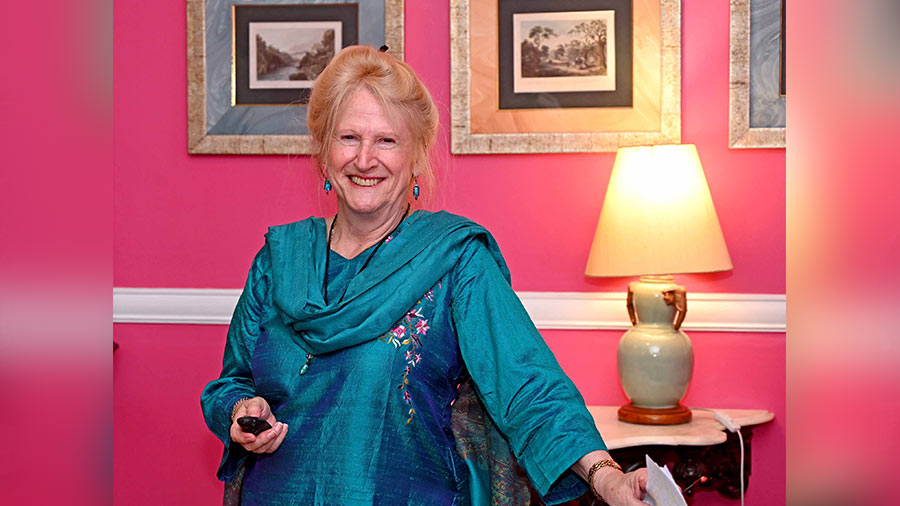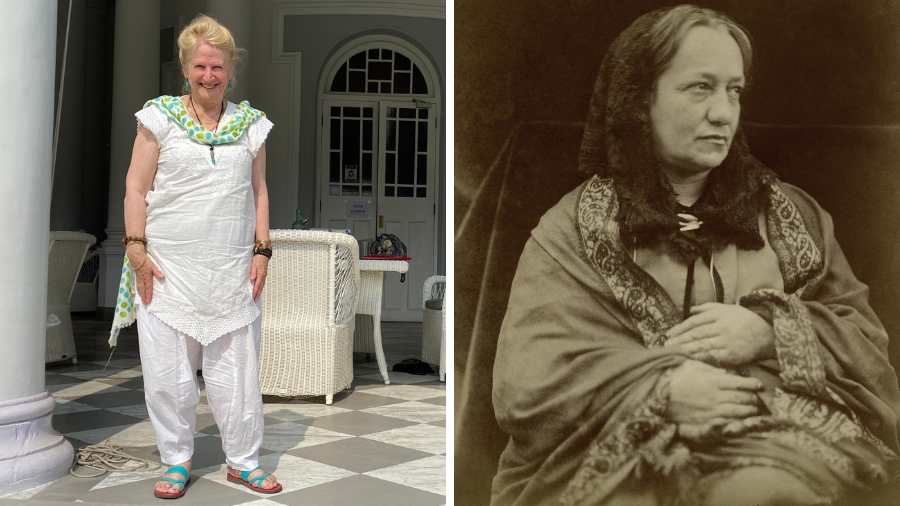There are several facets that contribute to the richness of Kolkata’s history – one of them is its identity as a city of well-kept secrets. One such secret was unveiled at the Glenburn Culture Club recently with a talk on Julia Margaret Cameron, the Victorian-era portrait photographer, who is considered a pioneer of the craft today. Few knew that Cameron was born in 19th-century Calcutta, was baptised – and later married – at the St. John’s Anglican Cathedral in Calcutta — a beloved place of worship and heritage known in present-day Kolkata as St. John’s Church.
These facts were unknown even to Jane Richter, an expert on Cameron. Richter, a former teacher and current owner of a guided tour company on the Isle of Wight, England, began to unearth Cameron’s intricate connections to our beloved city on her second visit to India. Richter has spent years researching Cameron’s life and work. Her growing interests in Cameron and in India coincided with each other, around the same time that she was moving to the Isle of Wight with her husband, to – as luck would have it – set up home two lanes away from Dimbola Lodge, which had been Cameron’s home for 15 years.
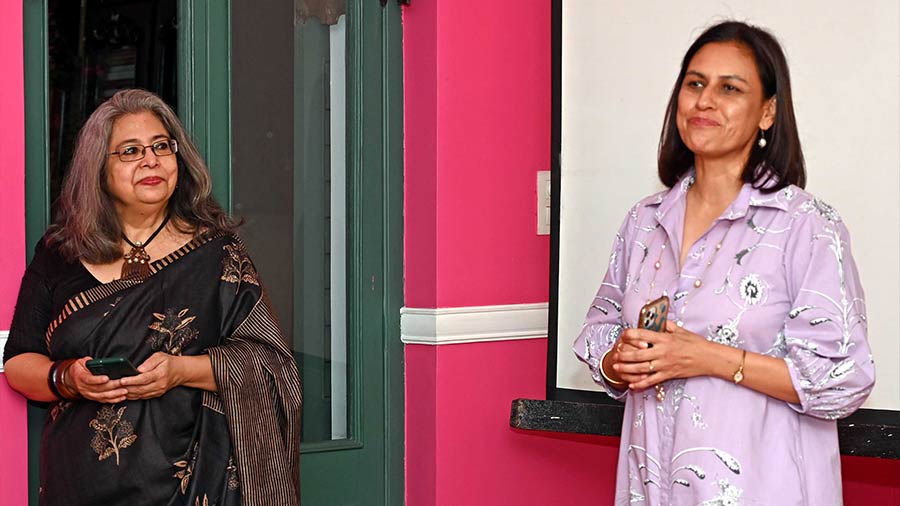
Anjum Katyal and Husna-Tara Prakash welcome the audience and introduce the speaker
It was thus fitting that Richter shared everything she had learnt about Cameron and Kolkata with a rapt audience at the third session of the Glenburn Culture Club. Titled Lady of Calcutta: Through a Victorian Lens, the session was hosted at the Glenburn Penthouse on November 19, in association with My Kolkata.
Husna-Tara Prakash, the owner of Glenburn Penthouse, opened the evening’s proceedings, and author Anjum Katyal introduced the speaker, observing how so many events occur owing to serendipity. “Jane Richter popped up in our lives through common friends, and we discovered that she had not only made a film but was also looking at the life of a Victorian-era photographer born in Calcutta,” she said. “Julia Margaret Cameron, as we learnt from Jane, had a complex and interesting relationship with the city. We never know what kind of things influence us while we are growing up, as such, I’m sure that a lot of Cameron’s experiences in Calcutta filtered into her work!”
Richter’s talk consisted of a fascinating and detailed visual presentation on Cameron and the colonial, familial and geographical ecosystem around her, all of which played a part in the trajectory of her life and, of course, her work. Born Julia Margaret Pattle to James Pattle, an East India Company official, and Adeline, a French aristocrat, the young girl’s life was rarely devoid of adventure. “When she was four months old, Julia made her first sea voyage on the SS Mornington, which was burned off the coast of Madras,” revealed Richter. “The passengers aboard had to be rescued by an EIC schooner!”
The Julia Cameron connect: 39 Garden Reach Road to James Prinsep
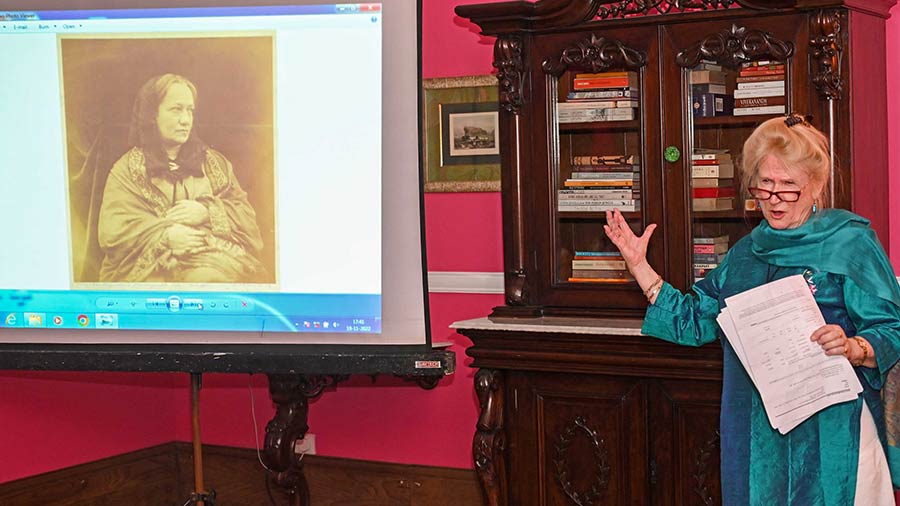
Jane Richter displays a photograph of Julia Margaret Cameron that was taken by her son, Henry Herschel Hay Cameron, who was a professional photographer
Several other noteworthy events would go on to occur in the life of the intrepid photographer, from whom several individuals of note have descended – such as Virginia Woolf – and to whom several others were related via marriage – such as James Prinsep, after whom the famous Prinsep Ghat along the Kolkata bank of the Hooghly river is built. As Richter revealed, Cameron witnessed the births and deaths of siblings while at sea, met her husband, Charles, in South Africa while both were recuperating from different ailments, and even bought a house – Dimbola – in the absence of her husband at a time when it was unheard of for women to own property, let alone buy any themselves.
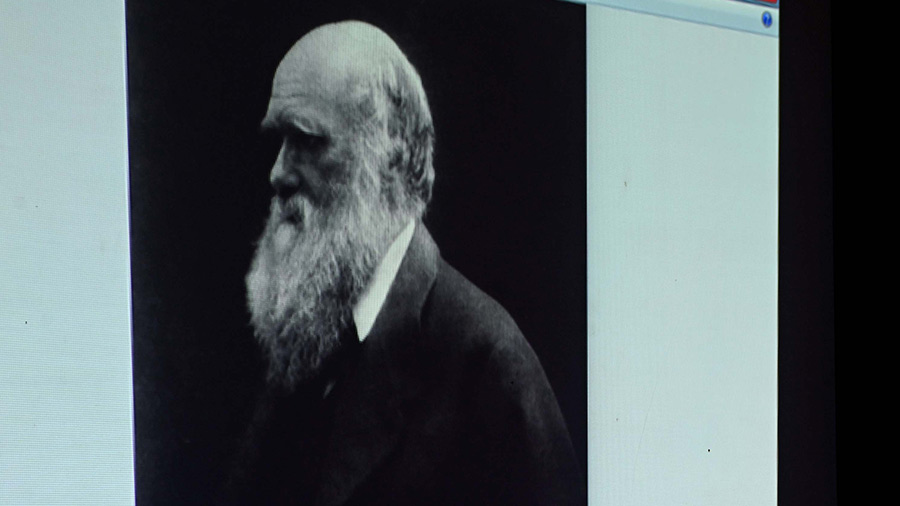
A photograph of Charles Darwin, taken by Julia Margaret Cameron, was a part of the presentation
Some of the most fascinating parts of the presentation included present-day glimpses of 39 Garden Reach Road, where Cameron was born in 1815, and the commentary it provided on the changing nature of the city’s urban landscape over two centuries. The icing on the cake was, of course, every slide of the presentation that showed the photographs Cameron had taken. Be it of astronomer John Herschel, evolutionary biologist Charles Darwin or actress Ellen Terry, each one of Cameron’s photographs radiated a character and message of its own – each singular in its essence, like its creator.

The audience at the third session of the Glenburn Culture Club
Of special note was the fearless abandon evident in the way she depicted a few women in her photographs – a forcefulness that was very much a part of who she was, and a departure from her signature use of the soft focus. It was interesting to hear Richter describe Cameron’s methods: “She lived in chaos.… It did not matter if anybody got fed or if the Camerons had guests for dinner. If Julia was in the middle of taking a shot, you waited for your dinner for a couple of hours until she finished!” This was heartening, too, because such disregard for convention and such freedom to create without a care have historically only belonged to men. What a privilege it was, on a November evening at the Glenburn Penthouse overlooking the Victoria Memorial, to witness the work of a woman who was able to do the same.
